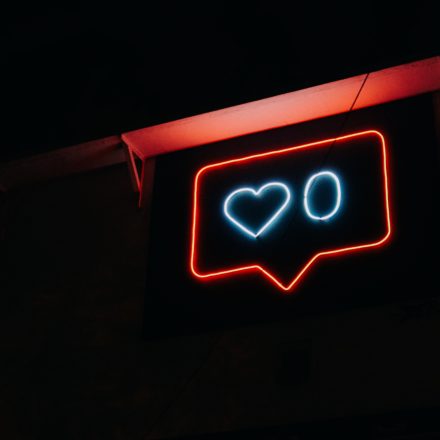We get it…marketing can quickly get confusing. Should you be concentrating on SEO, looking to better understand your analytics, A/B testing that subject line, or all of the above?
Not only is the terminology of marketing downright difficult to comprehend, the whole industry is a playing field that quickly shifts as the digital landscape continues to evolve.
In a bid to assist, here’s a quick guide to the top 50 terms of marketing and exactly what they mean.
A/B split testing
This is the process of comparing two variations of an ad campaign, email or basically any marketing strategy to determine which version works better in front of a real-world audience. It’s most often used in email marketing and website landing pages.
Analytics
Analytics are the overarching metrics used to understand what’s going on where in the marketing process. They extend from the number of visitors to a page right through to the click-through rate. Analytics are the numbers that tell you how effectively something is working.
B2B and B2C
There are two general types of audiences that businesses usually market to: business to business (AKA B2B) and Business to Consumer (B2C).
Bounce rate
Bounce rate applies to various marketing channels. In websites it’s the number of people who land on a site then depart without clicking or doing anything else. In email, it’s the number of emails that were not able to be effectively delivered to an email recipient’s inbox.
Branding
Branding encompasses everything a business wants to represent to their intended audience and consumer. It extends from logos to the business vision and mission, and includes the tone of content, the font used, the imagery utilised and so much more.
Business blogging
Business blogging is a specific type of content creation that involves creating useful, informative articles for a website, social media, or guest posts on other online publications that raise the profile of a business. It is designed to increase audience numbers, improve customer engagement and ultimately improve sales.
Buyer persona/customer persona
A buyer persona is a detailed representation of a business’ ideal customer. It is effectively an amalgamation of information that includes demographics, habits, income and preferences that helps a business determine exactly who they are talking to and the type of advertising and content that might appeal.
CAC (Customer acquisition cost)
This figure determines how much it actually costs you to get a customer. The equation involves: adding up all areas of your marketing spend over a certain period (including bonuses, salaries etc) and dividing it by the number of actual new paying customers in that period.
It should not be confused with cost per acquisition.
Churn rate
The churn rate is a metric used to indicate how many customers a business retains at what value.
Churn rate is calculated by considering: the number of customers you lost during a timeframe and then dividing it by the number you had initially at the beginning of a timeframe, compared to the number of customers at the end.
Therefore, if a business had 2000 customers at the beginning of April and 1500 at the end, the churn rate would be: 2000-1500 = 500/2000 = churn rate of .25 per cent.
Closed-loop marketing
Closed-loop marketing is the process of being able to execute, track and show how marketing efforts have contributed to business growth. Done correctly, it shows exactly how much yield your marketing efforts offered in terms of actual sales and income.
Content marketing
Content marketing involves the creation of useful information through channels like blogs, memes, tips, Facebook posts etc that is used to market a business, as opposed to standard advertising.
CMS (Content Management System)
An application that makes it easier for users to create and schedule content for their audience on a website.
Conversion path
A conversion path involves all the website-based events that consumers navigate on their path to purchasing. So, for example it may start with a landing page that features a “learn more” button, leading to a product description with a “buy now” button.
CPA (Cost per Acquisition)
This is the metric used to determine how much it actually cost you to acquire a potential customer. It’s a number determined by dividing the total cost of your campaign by the number of conversions.
CRM (Customer Relationship Management)
Software programs that allow you to track the interactions you have with potential and existing customers.
CTA (Call to action)
Hugely important in any piece of marketing content, the call to action leads the consumer where you want them to go next. It includes links, like “Click here for more information” or “Contact us here” but also extends to registration forms, “Buy now’ buttons and more.
CTR (Click through rate)
The percentage of your audience that advances from one stage of a marketing campaign to the next by clicking on the link you suggest.
In pure mathematical terms, it’s the total number of clicks that your page or CTA receives divided by the number of various opportunities that people had to click on it.
Demographics
Technically demographics are the “statistical data relating to the population and particular groups within it”. In marketing they help you narrow down and identify the audience you should be targeting.
Dynamic content
A method of displaying different messaging to consumers based on what you already know about them.
Editorial calendar
A way of planning out content that you can use throughout the year to inform your audience and better educate your consumer.
Email marketing
Email marketing is the act of sending a commercial message, typically to a group of people in your client database, using email.
Engagement rate
A social media metric used to indicate the amount of audience interaction your content elicits. It’s usually based on factors such as Likes, Comments and Shares, that tell you how much a message resonates with a potential customer.
Evergreen content
Evergreen content is the type of content your customer finds useful any time of the year. It is considered timeless (therefor evergreen).
Facebook Profile
A Facebook profile is the personal profile all users are required to have in order to utilise the Facebook platform.
Facebook Page
A Facebook page can be set up for business or events. It is a professional area that can be used for information, promotion, blogs and the purposes of Facebook ads.
Facebook Group
A Facebook Group is designated community and area where members can interact on relevant topics. It requires an administrator to monitor the group’s activity, comments and posts.
Facebook Live
A live video that is posted as its created. Used well, Facebook lives are an excellent tool for increasing consumer engagement and followers.
Friction
Any interaction, action or event that is likely to place a barrier in front of your consumer when they wish to learn more about your brand and/or buy.
Hashtag
A hashtag is a word or collection of words that make it easier for an audience to interact with each other on social media and have conversations about a particular piece of content.
Essentially, hashtags tie public conversations on Twitter, Facebook, and Instagram together into a single stream, which users can find by searching for the tag
HTML
Short for HyperText Markup Language, it’s basically the code used to write web pages.
Inbound marketing
This is the content and information that draws visitors into your website. It’s designed to seek attention, offer clues, incentives and simple information that makes it easy to find a business online.
Inbound Link
An inbound link is a hyperlink coming to your site from another website.
Infographic
An infographic is a visual piece of information that succinctly relates information or facts using pictures and text.
KPI
Quite simply KPI means key performance indicator. It is used to measure the success of any activity, employee or initiative within a business. In marketing, key performance indicators include customer acquisition cost, home page views, click-through rates, and more. Basically KPIs are the designated metrics that measure how effective a marketing campaign or strategy is.
Keyword
Ohh how we love them! Keywords are the words or phrases that Google and other search engines use to direct people to a site. When keywords are optomised, it makes it easier for search engines to find your website, allowing it to rank higher.
Landing page
A landing page is the first page people land on for your website or a specific product/service. They should be carefully crafted to lead the prospective customer onto the next stage of the purchasing journey, or to provide information that allows a business to touch base with the prospect at a later date.
Lead
A potential or existing customer who has shown interest in a product or service.
Lead Generation/Lead Magnet/Lead Nurturing
Lead generation is the act of finding new prospects through marketing or contact. A lead magnet is an incentive that marketers offer a prospective lead in return for the contact information. Lead nurturing is the act of providing timely pieces of information to prospects that keep a business front of mind or may later induce a consumer to buy.
Lifetime value
This is the prediction of the net profit attributed to the entire future relationship with a customer. To calculate LTV, the following equation is used:
- Take the revenue the customer paid you in that time period.
- Subtract from that number the gross margin.
- Divide by the estimated churn rate for that customer.
Lookalike audiences
Lookalike audiences are a Facebook tool that is generally built using email lists. It’s a way to target users that are similar to the ones you already have when it comes to Facebook advertising.
You upload your email list to your Facebook ad campaign and it will take these emails and find similar users to target.
You can even exclude the emails that you upload if you do not wish to advertise to current customers.
Mission
A business mission is an important element of the branding strategy that factors in where an enterprise is right here, right now and the way it offers its products or services as a result.
It is the service ethos a customer can expect to receive during a transaction with that business in the present and in many ways is how a business operates day-to-day.
Mobile optimisation
The process of ensuring your website is accessible and readable for the mobile or smart phone viewer.
Outbound marketing
This is content, advertising or information that directs a reader away from your site to another destination.
Outbound link
An outbound link takes users from your website to another as the source of information or the place they can find the products and services they require. In some cases outbound links can be useful for building credibility in your content. For example, your blog might offer an Outbound link to Harvard Business Review, as a way of noting you use credible sources.
Pixel
A tracking pixel is a piece of HTML code inserted into a website or email. It tracks how a viewer came to be there and what they do while on the site.
Pixels are extremely useful for tracking user behaviour and conversions.
PPC (Pay-per-click)
A model which sees a business pay a publisher (like a website, search engine, or social media site) money every time their advertisement is clicked. Essentially PPC is a paid way to direct traffic to a website.
SEO (Search engine optomisation)
At its most basic SEO ensures Google and other search engines find, recognise and rank websites for the information they contain. Then the practice involves utilising tools like blogging and keywords to enhance the position of a website so it ranks higher in search engine results.
Social proof
Hugely important in the social media age, social proof is a psychological phenomenon that sees people seek the direction and opinion of those around them before deciding how to act in situations. In marketing, social proof is all about what others say and do in reaction to a product. It ranges from reviews, to testimonials and purchase statistics.
Viral content
Content that elicits such a reaction it is shared by others prolifically to a wide audience.
Vision
A business vision helps define what a business hopes to stand for. In contrast to the Mission, it incorporates the grandest of plans. These are the dreams a business wishes to espouse, the future they hope to attain.
About Openseed
At Openseed we specialise in planting the seeds of customer reach through compelling brands and SEO optimised websites. We then nurture kernel of great content, devising strategies and storytelling to support business in their ongoing conversation with their customer. Ultimately it reaps an ongoing harvest that delivers business real and proven results.
You can learn more about our services here or contact us directly to start that customer conversation.










